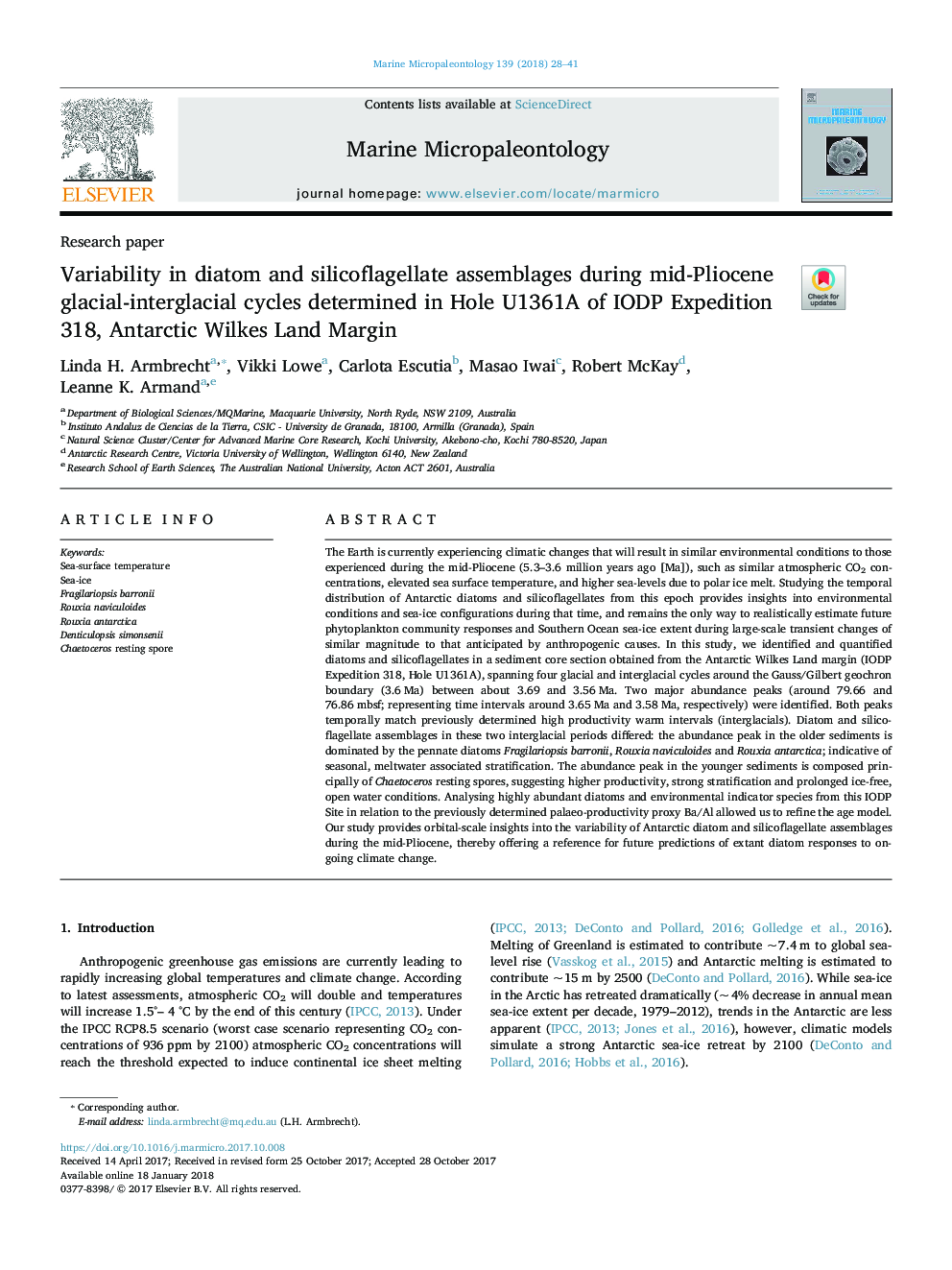| Article ID | Journal | Published Year | Pages | File Type |
|---|---|---|---|---|
| 8916509 | Marine Micropaleontology | 2018 | 14 Pages |
Abstract
The Earth is currently experiencing climatic changes that will result in similar environmental conditions to those experienced during the mid-Pliocene (5.3-3.6 million years ago [Ma]), such as similar atmospheric CO2 concentrations, elevated sea surface temperature, and higher sea-levels due to polar ice melt. Studying the temporal distribution of Antarctic diatoms and silicoflagellates from this epoch provides insights into environmental conditions and sea-ice configurations during that time, and remains the only way to realistically estimate future phytoplankton community responses and Southern Ocean sea-ice extent during large-scale transient changes of similar magnitude to that anticipated by anthropogenic causes. In this study, we identified and quantified diatoms and silicoflagellates in a sediment core section obtained from the Antarctic Wilkes Land margin (IODP Expedition 318, Hole U1361A), spanning four glacial and interglacial cycles around the Gauss/Gilbert geochron boundary (3.6Â Ma) between about 3.69 and 3.56Â Ma. Two major abundance peaks (around 79.66 and 76.86Â mbsf; representing time intervals around 3.65Â Ma and 3.58Â Ma, respectively) were identified. Both peaks temporally match previously determined high productivity warm intervals (interglacials). Diatom and silicoflagellate assemblages in these two interglacial periods differed: the abundance peak in the older sediments is dominated by the pennate diatoms Fragilariopsis barronii, Rouxia naviculoides and Rouxia antarctica; indicative of seasonal, meltwater associated stratification. The abundance peak in the younger sediments is composed principally of Chaetoceros resting spores, suggesting higher productivity, strong stratification and prolonged ice-free, open water conditions. Analysing highly abundant diatoms and environmental indicator species from this IODP Site in relation to the previously determined palaeo-productivity proxy Ba/Al allowed us to refine the age model. Our study provides orbital-scale insights into the variability of Antarctic diatom and silicoflagellate assemblages during the mid-Pliocene, thereby offering a reference for future predictions of extant diatom responses to ongoing climate change.
Keywords
Related Topics
Physical Sciences and Engineering
Earth and Planetary Sciences
Palaeontology
Authors
Linda H. Armbrecht, Vikki Lowe, Carlota Escutia, Masao Iwai, Robert McKay, Leanne K. Armand,
